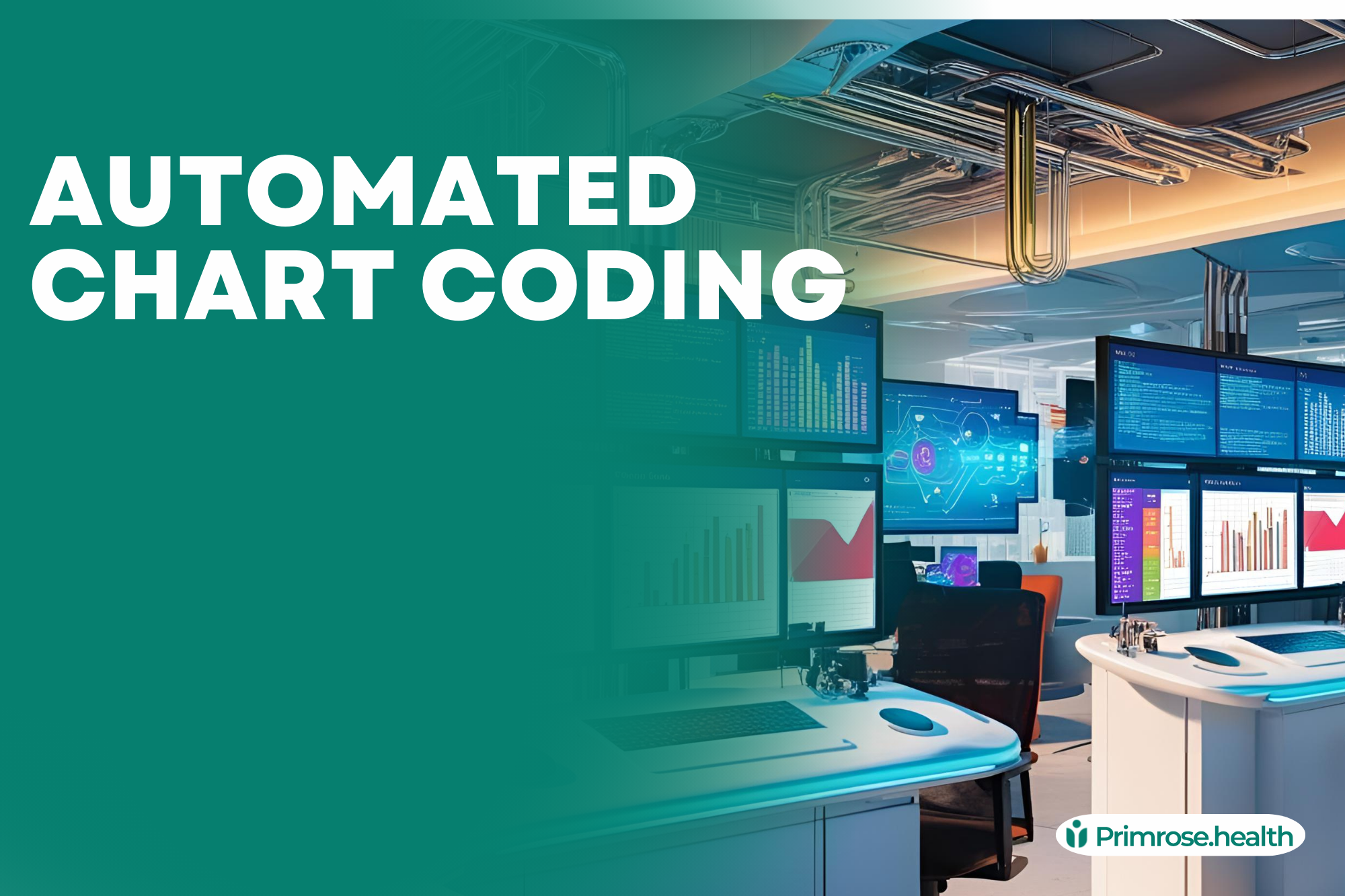Introduction
Accurate coding is harder than ever. There are over 68,000 ICD-10 diagnosis codes and 87,000 CPT procedure codes. Both systems are updated every quarter. Mistakes in coding come at a high cost. They lead to denied claims, compliance issues, lower payments, and wasted resources. Traditional methods such as manual coding, CAC tools, or outsourcing all come with well-known issues. They often deliver uneven results, slow turnaround, high labor costs, and can’t keep up with changing workloads.
These issues have pushed healthcare groups to look for smarter tools. AI is now helping transform the coding process. Automated chart coding is the next step forward. It uses advanced tech to read clinical notes, choose the right codes, and improve the revenue cycle. Unlike basic CAC systems, which rely on rules and keywords, automated coding uses AI, natural language processing, and learning systems. This leads to better accuracy and faster results.
The Critical Role of Coding in Healthcare Operations
Medical coding serves multiple essential functions within healthcare organizations:
Financial Impact: Coding directly influences reimbursement through diagnosis-related groups (DRGs), hierarchical condition categories (HCCs), and procedure-specific codes that determine payment rates. Even minor coding errors or omissions can significantly impact revenue.
Quality Measurement: Accurate coding supports quality metrics and risk adjustment factors critical to value-based care models. Undercoding clinical complexity leads to artificially poor outcome metrics and inadequate risk adjustment.
Population Health Management: Coded data drives population health initiatives, identifying high-risk patients and tracking chronic disease management. Incomplete coding limits the effectiveness of these programs.
Compliance Requirements: Medical coding must adhere to strict regulatory guidelines, with errors potentially triggering audits, recoupments, or even fraud investigations. The complexity of coding rules makes compliance a constant challenge.
The Evolution of Medical Coding Approaches
Medical coding has evolved through several distinct phases over the past decades:
Manual Coding (1st Generation): Human coders reviewing documentation and manually assigning codes based on their knowledge and reference materials. While once the standard, this approach is labor-intensive, inconsistent, and increasingly unsustainable.
Computer-Assisted Coding (2nd Generation): Basic systems that analyze documentation for keywords and suggest potential codes for human review. While more efficient than purely manual coding, these systems typically achieve only 60-70% accuracy and require substantial human intervention.
Outsourced Coding Services (Alternative Approach): Many organizations have turned to external coding companies to manage volume fluctuations and staffing challenges. However, this approach often introduces quality control issues, communication challenges, and significant expense.
Automated Chart Coding (Current Evolution): The latest approach leverages artificial intelligence, natural language processing, and machine learning to truly understand clinical documentation, accurately determine appropriate codes, and continuously improve through learning algorithms.
How Automated Chart Coding Works
Modern automated coding solutions employ several sophisticated technologies to transform the coding process:
Natural Language Understanding
Unlike basic keyword-matching systems, advanced automated coding uses natural language processing to truly comprehend clinical documentation:
- Contextual comprehension recognizes that the same terms may have different coding implications depending on context
- Semantic relationship mapping identifies connections between symptoms, diagnoses, treatments, and outcomes
- Implied content recognition identifies conditions that are clinically indicated but not explicitly stated
- Negation and temporal analysis differentiates between current, historical, and ruled-out conditions
- Document structure analysis appropriately processes different sections of clinical notes (history, assessment, plan)
Clinical Knowledge Integration
Automated coding incorporates deep clinical knowledge through:
- Medical ontology mapping that connects clinical concepts to appropriate codes
- Specialty-specific code selection rules for different clinical disciplines
- Anatomical relationship understanding that identifies affected body systems
- Procedure technique recognition that distinguishes between similar procedures with different approaches
- Medication-diagnosis correlation that links pharmaceuticals to potential diagnoses
Code Optimization Intelligence
Beyond simple code assignment, automated systems optimize coding for both accuracy and revenue integrity:
- Specificity maximization selects the most detailed applicable codes
- Hierarchical code selection properly applies combination and manifestation coding rules
- Code sequencing correctly orders primary and secondary diagnoses
- Missing documentation identification flags potential documentation gaps for physician review
- Compliance risk assessment identifies potential audit triggers
Continuous Learning System
Unlike static rule-based systems, Denial Correction Intelligence continuously improves:
- Machine learning algorithms that refine code selection based on outcomes
- Audit feedback integration that incorporates insights from coding reviews
- Denial pattern analysis that adapts to changing payer behaviors
- Documentation trend recognition that adjusts to physician documentation patterns
- Ongoing knowledge base updates that incorporate coding guideline changes
The Future of Automated Coding
As healthcare continues to evolve, automated coding systems will incorporate additional capabilities:
- Real-time Coding During Documentation: Systems will provide immediate coding feedback as physicians document, enabling concurrent correction
- Multi-modal Input Processing: Advanced systems will incorporate not just text but also imaging reports, lab data, and other clinical inputs
- Predictive Documentation Guidance: AI will suggest documentation elements needed for appropriate code assignment
- Value-Based Care Optimization: Systems will identify documentation and coding opportunities that impact quality measures and risk adjustment
- Autonomous Learning Networks: Coding systems will share learnings across organizations while maintaining privacy and security
Conclusion
Automated chart coding is more than just an operational upgrade. It turns medical coding from a routine task into a strategic tool. This shift improves both financial results and clinical care.By capturing the full complexity of services, automated coding helps ensure proper payment. It also generates useful data for quality improvement, risk management, and planning.
Healthcare continues to face financial strain and rising administrative demands. Organizations using AI for coding will gain clear advantages. They will see better financial outcomes, greater efficiency, and improved clinical reporting.The real question isn’t if they should adopt this technology—it’s how soon they can start seeing the benefits.
